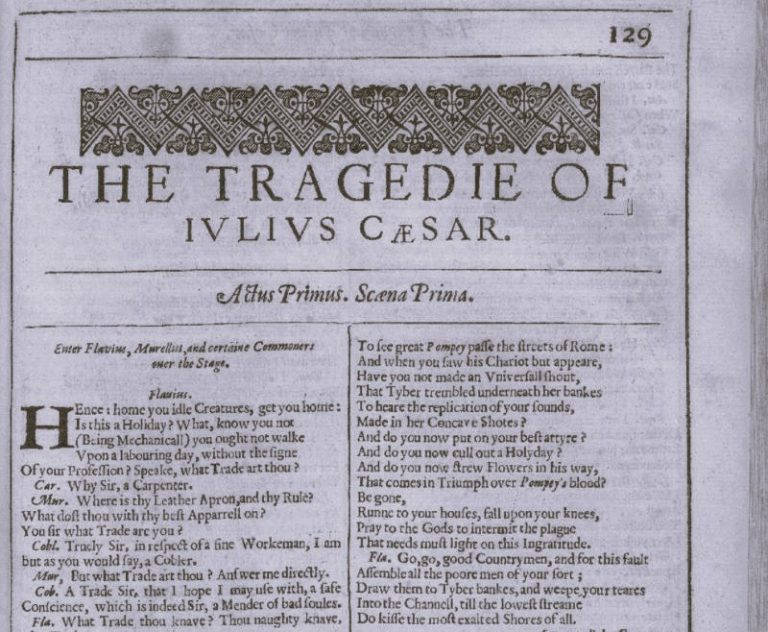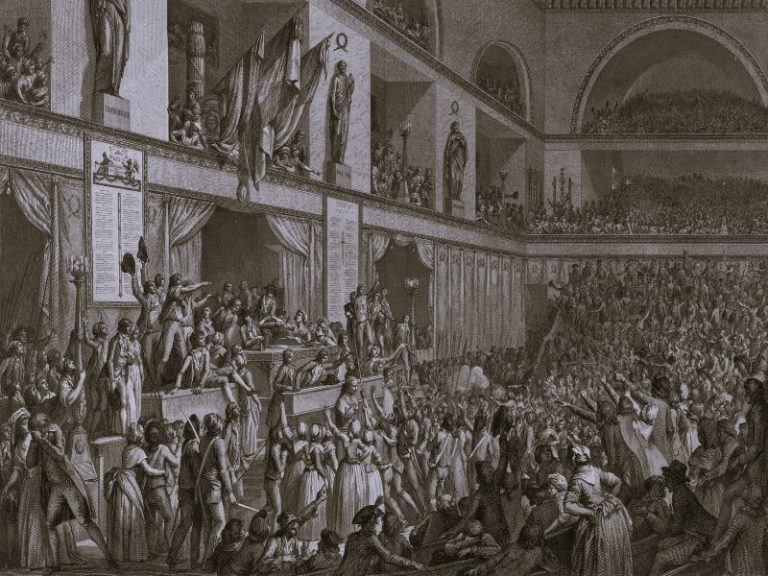
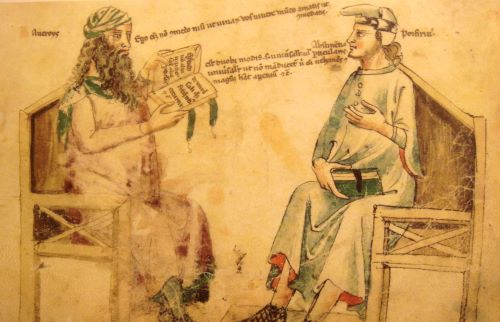
Porphyry distinguishes six categories of gods and the powers they bestow.

By Dr. Giuseppe Muscolino
Professor of Engineering
Università degli Studi di Messina
In the De abstinentia (ii, 41, 5) Porphyry is the first philosopher to give an exact definition of goeteia or black magic saying: “All black magic is accomplished through the opposite sort [i.e. evil] daemons.
This paper will be presented in two parts: in the first part, there is the description about the difference between Magic—the sacred science of the Persian Magi (De abstinentia iv, 16, 1)—, and the black magic (De abstinentia ii, 41, 5); in the second part, using Porphyry’s definition of black magic and other philological data, it’s shown that Porphyry was not merely a philosopher interested in black magic in a theoretical manner, but also a practicing sorcerer.
In ancient Persia the Zoroastrian priests’ knowledge included philosophy, religion, astronomy, mathematics, and they referred to it simply as maghavan, which means magic. The magician, thanks to his scholarship and his practices, not only knows the forces and energies that act in the universe, but also manages to control them. Believing in the dogma of universal sympathy—a network of forces that constantly unifies the whole cosmic reality—the magician is fully conscious that everything is affected by everything, so he is not content simply to study these links and energies, but also wants to dominate and manage them. Thanks to his knowledge and his practice, he administrates to win the blind resistance of matter and is also able to get in touch with the dimension of the divine in order to learn its secrets and therefore to live in harmony with it.
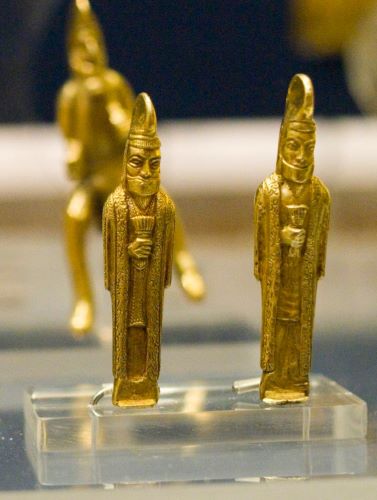
Porphyry fits perfectly into this concept and argues that the Magi come from ancient Persia and are wise about the divine.1 The access to such knowledge and the practices related to it for the management and the control of the cosmic forces, as in all priestly communities, is gradual and follows a strict timing of maturation and exercise. Thus, the Magi are divided into three orders:2 the first are those who show a perfect self-control and have power on the cosmic forces, as well as exercise certain practices that cannot be disclosed to other members of the caste; the second order consists of those magicians who have less knowledge and a less powerful force of mind; the third are those who are still at an early stage.
According to Porphyry3 the more experienced and elderly among the Magi have the ability to get in touch with the gods thanks to their knowledge of the divine names, incomprehensible to the human ear, but indispensable for the correct invocation of the god. These names and these prayers have been disclosed by the gods directly to the Magi, who know how to invoke the deity seven times, as the wisest of them (that is Apollo) unveiled, and as the ancient magician Ostanes did.
The second skill that the Magi reach is the ability to liberate man from the bonds of Fate and Necessity in order to change them in any way: in the Philosophia ex oraculis4 Porphyry says that the magician is able, thanks to the secrets revealed by the gods, to untie the bonds of Heimarmene already during the course of life, and to move towards a holy and perfect life in full and complete unity with the divine.
Whether he aspires to the pure knowledge of the divine plan, that is theosophy as Porphyry says, or he works to untie the man from the yoke of blind Necessity, the magician directs his life to the superior knowledge and the constant search of a pure and blessed life, which is also reflected in everyday behaviour.
When the direction of the knowledge and the practices is not addressed to the divine love and the prayers to the gods, but tends to meet the material needs of the irrational part of the soul of man, that is the pneumatic one, then we have the realm of black magic or sorcery and the operator is not a magician but a sorcerer, as the same Porphyry says in a passage of De abstinentia explaining clearly who the people who practice black magic (goeteia) are: “Certainly the whole sorcery acts through the evil (demons)”.5
Before speaking in an analytical way of black magic, it is necessary to say that often the term magic has been used incorrectly to describe the art of the Magi, the theurgy and the sorcery or black magic who have different rites and purposes. The first, as we have seen, has the main purpose to know the divine names, to free man from the bonds of Fate and bring it to the knowledge of the divine; the second, to bind the theurgist with the divinity (god or demon) to forced her to do the will of the officiant by the telestic ritual and the mediumistic trance;6 the third, as we shall see, to bring it into relation with the evil demons thanks to the evocations, the blood of killed victims and the smoke of the burned animal fat.
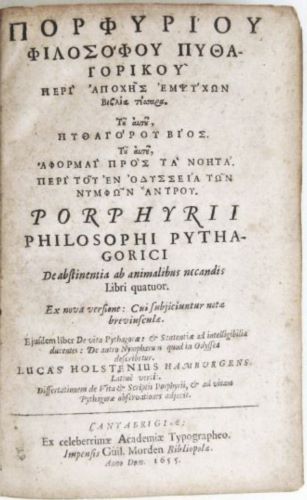
Porphyry7 distinguishes six categories of gods, that can be classified into celestial, ethereal, aerial, terrestrial, marine and infernal. In De abstinentia8 after talking about the gods, he describes two kinds of lower spirits, i.e. the demons, the good ones and the bad ones. The first ones are those who, being born from the Cosmic Soul, administer large areas of the sublunary regions, and particularly dominate with their reason the irrational part which is called ochema-pneuma or pneumatic body; the evil demons instead are dominated by the instinctive part of the soul and for this reason they are violent, devious and choleric.
On top of this hierarchy of infernal demons there are two gods: Serapis and Hecate. Now, while in De abstinentia9 Porphyry indicates that there is a prince of this infernal hierarchy, without providing any information, in Philosophia ex oraculis10 he is instead very precise: Serapis and Hecate are the gods who rule the evil demons, with whom Cerberus is also associated, the three-headed dog that symbolizes the evil demons and is threefold since the number three is the symbol of the bodily and terrestrial nature.
In Philosophia ex oraculis11 Serapis is described with a tunic, long hair and a bushy beard, all features that are intended to confer authority, majesty and wisdom to the divinity; on his head he wears a calathos, an object used as the unit of measure for grain emphasizing the purely earthly nature of the god; he holds a sceptre with his left arm while his right arm is near Cerberus: this gesture symbolizes the control of Serapis on the three-headed dog, the emblem of all the demons and evil spirits.
After speaking of Serapis, who in Greece is equivalent to Pluto lord of the underworld, Porphyry talks about Hecate and provides some features of the symbols of her statue. He says that the statue of the goddess may be made either of Parian marble or ivory, finely chiseled, modeled on the statue of Demeter (albeit with the different symbolic variations that characterize and differentiate the two goddesses), with white robes, golden shoes and long snakes around her waist, embracing her.12
In an oracle in Philosophia ex oraculis,13 Porphyry describes a disturbing image of Hecate that synthesizes and fully justifies her epithet of queen of the demons of underworld: she is the virgin goddess of many faces, cruel, with three bull’s heads, holding the three symbols of the elements of nature and earth, governed by her black dogs, the demons of underworld. Porphyry describes analytically some symbols related to the goddess,14 represented with a candle of three colours, white, black and red, which represent the earthy and material element, while the candle itself represents the nocturnal or lunar feature of the goddess. Next to it, Hecate holds a whip with which she dominates and terrorizes the infernal demons. Elsewhere, the goddess can be represented with a sword to which a snake is twisted, holding a key symbolizing the control on the doors of underworld and the access or exit from Hades.
The infernal triad ends with Cerberus, the evil demon par excellence, depicted with three heads, with the tail like a snake and a myriad of snakes rising from its back. Such a terrifying picture puts the emphasis not only on the evil nature of the dog, described as the most fatal of demons, but also on its origin from the abode of underworld, and its material and irrational nature. So Cerberus, as stated in Philosophia ex oraculis15 is the symbol of the infernal demons located in the three elements, water, earth and air.
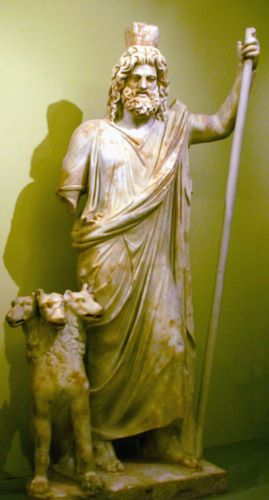
The evil demons, represented by the three-headed dog, are often depicted as black dogs: they howl at the full moon terrifying men, but tremble in the presence and vision of Hecate, who not only dominates but also terrifies them.
Therefore it is the infernal gods and evil demons who practice black magic and are also its recipients and use the magician to effectuate the evocative ritual and their misdeeds. And because it is accomplished by the gods and demons from underworld, and at the same time it is aimed at them, this magic is called black: black in fact is the symbolic colour of the ground and of the dark matter and therefore of the spiritual entities related to it: black must also be the objects used during the magical ritual, the vestments used by the sorcerer during the execution of the rite, and also the animals sacrificed on the altar,16 and even the blood dripping from the sacrificial victims is “(similar) to the black wine”.17
The home of these demons is underground, in the kingdom of the dead which is identified with Hades or underworld, a place that takes its name from the god of the dead, called indeed Hades or Pluto and identified, as we have seen, with Serapis. This place, which in its etymological sense encompasses all the anguish and the fear of the place—Hades, in fact, means place in darkness where no one can see (Aides)—, has been identified in the Odyssey (x, 491-574, xi, 14-19) as the land of the Cimmerians, a mythical region to the North, perpetually shrouded in mist and darkness, while in the Latin tradition, from Virgil to Strabo to Pliny the Elder, Hades is located in Pozzuoli near Cumae, with the entrance in the depths of Lake Averno.
The evil demons come out of underworld, either by order of Serapis and Hecate, or through the evocation of the sorcerer, in order to accomplish their evil spells against men, and to complete the effects of witchcraft or black magic.
Before describing the performance of a ritual of black magic, we need to make a difference between evocation and sacrificial killing.
Evocation is the call of evil demons by the sorcerer, who, thanks to a precise and strict ritual, forces them to appear before him to satisfy his demands, which are normally concerned with the knowledge of the future or the attainment of purposes belonging to the material sphere.
The sacrifice is instead a ritual in which a victim is offered to the demons to ingratiate them or to appease their anger and malice.
Before the evocation of the infernal demons it is necessary to build the symbols or characters or amulets, that is, objects or figures that have a particular relevance, a sympathy, a magical connection with the demon. From what has been learned from the Philosophia ex oraculis18 the same gods or demons reveal not only the shape but also the rules for constructing these symbols or characters. Porphyry in fact points out that the evil demons submitted to Serapis are attracted by the symbols and by the propitiatory rituals; and the expiatory sacrifices celebrated in honour of evil demons, are addressed to Pluto/Serapis. So the symbols or amulets, when they are created or designed, start generating a force of attraction and connection between the sorcerer and the gods and at the same time move the cosmic and astral forces that support the art of magic, whatever its purpose.
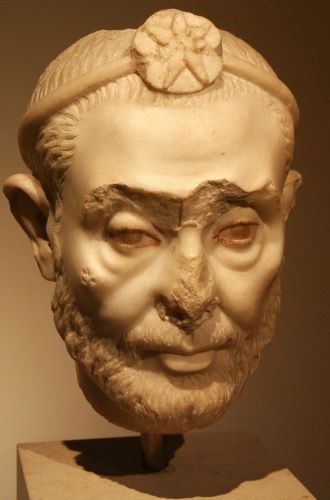
After building the symbols and figures or characters, the sorcerer wears black vestments on which are drawn or depicted the same symbols or characters, which have the function to create a contact of forces between the wizard and the demon.
Often during the preparation for the evocation of an infernal spirit it is necessary to erect a circle where the necromancer and his assistants will evoke the evil entity. In a passage from the Letter to Anebo19 Porphyry confirms that during the ritual the spirits are evoked within magical figures. The purpose of the circle, therefore, is to protect the sorcerer or some assistant from evil and irrational spirits that could possess them.
The instruments used for the preparation of the symbols, for the figures and for the erection of the magic circle must be new: the paper or parchment for the symbols must be pristine, the tools must never been used before because previous use could create—for the principle of sympathy, that is the link that exists between the material object and the corresponding spiritual nature—a bond or contamination that would prevent the object to correspond to the evoked demon.
The ritual must be done in a precise day and hour corresponding to the nature of the demon: normally the infernal spirits are evoked in the night and possibly on the new moon.
To make an evocation in a wrong hour or day could not have any effect because the spirit would not appear, but it could even be dangerous. Porphyry in Philosophia ex oraculis20 clearly says that the evil demons have unveiled their exact position in the hierarchy, the things they love, those by which they are dominated, the powers that submit them, the things they like as a sacrifice and in which days they can be evoked or must be left alone.
After these preparations the sorcerer begins the evocation of the spirit, calling it by name, and ordering it to appear before his sight. Even during the invocation of the demon, the sorcerer must pay close attention, both for the success of the operation and for his own safety. Porphyry in fact reports that during the evocation “spells and (formulas) of protection”21 are needed. It often happens that evil demons are reluctant to show themselves to the black magician: Porphyry in Philosophia ex oraculis22 explains that normally the good demons appear with ease, while the bad ones do not show up and try to fool or even worse to harm the operator. It is also sometimes possible that the appearance of evil demons is preceded by sounds because, as the philosopher of Tyre says, they “like kettle drums and flutes and female screams”,23 a situation that brings to mind the celebration of a sabbath of witches.
If the ritual is performed correctly, the infernal spirits can assume the guise of a beautiful woman or a man to excite the erotic attraction of the wizard and weaken him, or they may appear as frightening and in the “likeness to all Animals”24 to terrify the sorcerer. If despite the evil spirits’ repeated attempts to scare him, the necromancer has the power to evoke and to dominate them, they obey him and fulfil his demands, which may consist, for this type of magic, in the preparation of love potions to tie or possess someone sexually, or in a obtaining a large sum of money, or doing harm to someone, or even to know the future.
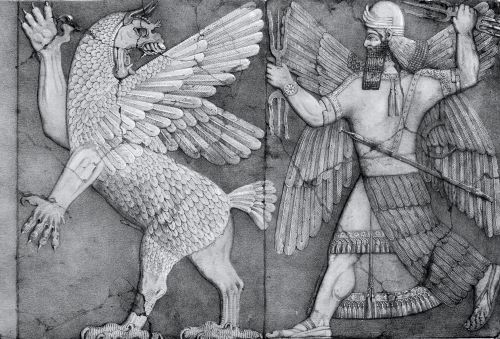
This is the evocation, but the evil demons—because their pneumatic body or ochema-pneuma, which constitutes their evil and irrational nature, has a substantial thickness and a density—like the sacrifices and the immolation of victims since they will feed and thicken their ochema pneuma with the blood the animal and the smoke of burning fat.
Before talking about the immolation or sacrificial offer, it must be said that Porphyry in De abstinentia25 carefully distinguished the different hypostases of the divine to whom a suitable sacrifice must be provided: to the First god, that is above all else, nothing material can be sacrificed, since all that is bodily is therefore impure. To this first god only pure silence and pure thought is acceptable, all gifts the celebrant can offer through the impassivity of the soul and the contemplation.26
Proceeding according to the hierarchy of the divine, Porphyry talks of the intelligible gods to whom not only the word must be offered, which is at the same time a rational sacrifice and a thanksgiving, but also those which the philosopher calls beautiful thoughts.27
It is assumed that to the third god too, or Soul of the world (although Porphyry does not specify it precisely) only inner thoughts should be sacrificed.28
Going further into the hierarchy of the divine world, Porphyry refers to the cosmos and to the fixed and wandering gods who accepts only inanimate beings. A multitude of invisible gods follow these, which Plato, says Porphyry, called demons indiscriminately. Porphyry, as we said before, establishes a clear dichotomy between good and evil demons: the former are such because they are able to dominate with their reason the irrational part enveloped by the ochema-pneuma, the latter are such because they are driven by the irrational part.
So before making the sacrifice it is necessary to obtain the objects that will be used during the ritual: knives, blades, and generally any other instrument used to kill the victim must be new for the same reason above named, and that is because there must be no contact or relationship of the spiritual forces with victims sacrificed earlier.
The sacrificial objects should be placed on a altar, well prepared, lit with oil lamps or candles, on which some containers for liquids, fruits, incense, grains and barley are placed.
The victim must be a quadruped, usually a goat or a lamb, because it walks on the ground and therefore is close to the earthly and underground world, so even if the ritual is not directed to the terrestrial but to the underground or infernal gods, the victim is the same, and must be black because black is the symbolic colour of the dark matter.29
After talking about everything needed for the altar of sacrifice, Porphyry recalls the oracle of Apollo, which requires that the sacrificial victim must not be slaughtered on the altar, since this operation is only carried out for terrestrial demons. For the infernal ones it is necessary to sacrifice the victim inside of a hole where the blood of the animal has to be poured and the whole body of the victim must be buried. More precisely, the sorcerer, along with his assistants, must dig a pit into which all the liquids used for the libation are poured, and where the meat of the sacrificial victim will be placed.30
Once everything is ready, the sorcerer proceeds to sacrifice starting the libations with wine, “black blood (similar to) red wine”,31 sheep’s milk and clean water; after which he pours the libation inside the hole where the whole body of the victim will be buried. Then, using one of the knives previously placed above the altar, the black magician slaughters the victim, divides it into three parts by “pouring the blood into a hole”32 and symbolically offers the black animal to the infernal demon or demons summoning them by name.
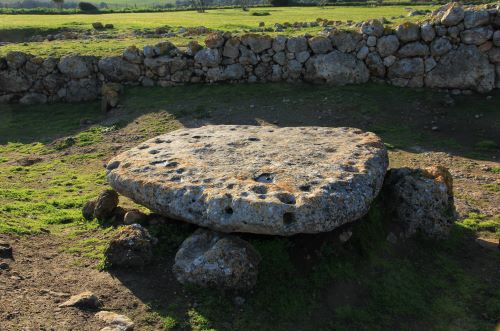
Porphyry mentions another oracle of Apollo, which says that “after settling (on the stake) the bowels (of the animals) a libation is made with the liquid (previously) poured”.33 The liquids used by the magician for the libation are poured into the pit and the body of the victim, dismembered into three parts, is buried in the pit in honour of the infernal demons, as if they would participate symbolically in the macabre libation and horrible banquet with the sorcerer.
The burning of the entrails of the victim along with the blood, grease and dirt is a powerful attraction for the demons of underworld: Porphyry says clearly that they especially like the blood and impurities, and penetrating into those who consult the oracles, they take possession of him. In fact the strength of the desire for these things is very violent, and the desire of the smoke of the fat of animals is violent even without the presence of demons. The demons of underworld drive men to fall under confused sounds of air for the pleasure they have in common to do these things: “the attraction of such a great quantity of spirits—Porphyry says—is towards the pleasure of burned entrails, or the desire for the intensity of the pleasure caused by the exhalation (of smoke), especially the one already leaked; at which point you will understand that these spirits are present”.34
There are cases in which the sorcerer, in order to achieve his purposes that are irrational and rude, uses the souls of the unburied who, violently dead and without a proper burial, can not fly away from the corpse, thus remaining near the carcass. These souls are dominated by the sorcerers, who use them to get in contact with evil spirits or to reach, through them, malicious and prohibited goals.35
The services procured by the impure spirits, as part of the sphere of the material and irrational, are ephemeral, transient and mostly false. These spirits are in fact misleading, since the false and the capacity to mislead is inherent in their nature:36 so they stun people, drive men to fall in the confused sounds and hissing air, attacking the poor possessed by them,37 pushing them to greed, lust, madness beyond the control of the sorcerer, but only for their will or the will of the gods who command them and for the common enjoyment in doing these evil things.38
As you can see, Porphyry underlines the intemperance, the lack of moderation, of self control that is the characteristic feature of these demons who can not govern their ochema-pneuma and their irrational part.39
Black magic can also aim to ingratiate the sorcerer with the evil demons, and to appease their wrath, or at least limit the damage they can provide. Porphyry reports that often not only individual men, but even the whole city makes sacrifices in honour of these demons in order to avoid that they go against the entire population,40 although the philosopher should not be interested in these practices but should aim to the full knowledge of the divine, to merge with God alone without the annoyance of companions, and to devote to building a perfect image of himself that looks exactly like the god who presides over the whole.41
Nevertheless, he does not preclude that who has a specific knowledge of benign and malignant deities and practices a holy life—certainly not the sorcerer who has only the claim to use the bad demons to satisfy the irrational part of his soul—, can work to expel the evil demons from a possessed person or a haunted place, and therefore operate an exorcism.
It is clear from the reference to black magic in works such as De abstinentia, the Philosophia ex oraculis and the Letter to Anebo, that the philosopher of Tyre knows the rituals, the effects, the rules of the magical ceremonial, so much that we can suppose he sometimes has practiced black magic. In fact, the testimony of an actual practice is in a passage of Vitae sophistarum ac philosophorum of the historian Eunapius of Sardis (iv, 12, 24), who reports that Porphyry once, thanks to an exorcism, managed to expel from a public bath a demon that the natives called Causatha. The etymology of the name recalls the Syriac for filth or the Hebrew for Poculum Satanae, so it is certain that the nature of Causatha is that of an evil demon.42 Porphyry himself knows several exorcisms practiced by his people, the Phoenicians, and the Egyptians. In Philosophia ex oraculis,43 he reports that some people, precisely the Phoenicians and the Egyptians, before invoking the benign gods—to avoid that the evil demons come close to the onlookers who are preparing to officiate the rite, and that these malignant entities may obstacle of the ceremonial or worse cause some damage to the faithful—are used to beat on the ground some strips of leather so that the noise may frighten them and they move away from the sacred place. Other exorcisms consist in loudly slamming hands, or throwing the animals on the ground so as to ward off the evil demons or to attract them away from a sacred place or a house by removing the sacrificial victim, and with it the smoke of fat and burning flesh.
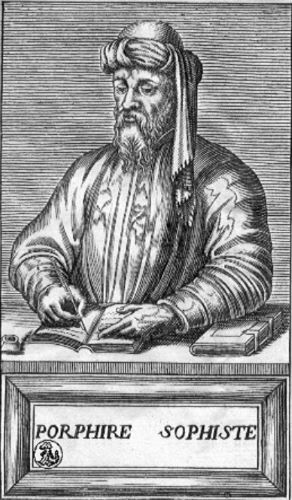
If a person is possessed by evil demons, the exorcism can be done by showing certain symbols or amulets that have the power to terrify the evil entities, making them flee.44 Such symbols, Porphyry says in a passage of Philosophia ex oraculis,45 are provided personally by Serapis, lord of evil demons, who reveals their exact composition in order to protect the operator and to drive the demons off the victim. In this passage the philosopher of Tyre also refers to the use of threatening the evil demons, which by their nature are inferior, evoking the names of demons or deities who command them, in this case Serapis. The exorcist can also address the demon with some formulas of clear Chaldean origin, shouting: chre se fughein, or feughe oti tachista, or even dio feughein dei pros to ano.46
Before doing the exorcism, the operator must have a clear soul, lead a holy life through the practice of vegetarianism and fasting, and devote himself to the knowledge and the assimilation with the divine, a practice that ensures the purity of life, which is a sort of protection against evil entities. Indeed, they do not approach and do not penetrate into what is different and contrary to their evil nature: purity, says Porphyry, is like a divine seal in order not to suffer any harm and to resist their temptations.47 The exorcist refrains not only from foods such as meat and fat, which increase the passions of the soul, but also from all those desires linked to the irrational part of the soul. He nourishes himself only with the knowledge of the divine, approaches god with a white robe, obtained through impassivity, and with a pure and light body, free from extraneous juices absorbed by the bodies of other living beings and from the passions of the soul.48
From what has been observed it is clear that Porphyry has a specialized knowledge of black magic, an art that in certain occasions, as reported in his biography, he might have practiced, in addition to the art of Magi (magic) and the theurgy. However, it is apparent that its exercise does not have as a goal to use the evil demons in order to obtain services and favours, the so-called adorcism—performed only by the sorcerer—, but only to drive them away from a possessed person or a place haunted by them. Because of his thorough knowledge of the ritual, of the hierarchy of evil demons, of the extreme danger of their presence for a victim or even a population, it is likely that he has practiced some exorcism even though this practice supposes the philosopher’s research, the knowledge, the escape from alone to Alone, the assimilation to God;49 all theories that Porphyry supports until the last of his works, the Letter to Marcella, and that constitute the ultimate reminder of the philosopher, the ultimate moral testament to his wife and to all humanity.
Appendix
Endnotes
- Porph., De abstin., iv, 16, 1, 22-23.
- Cfr. Ibidem, iv, 16, 2, 29-34.
- Cfr. Porph., Phil. ex orac., (apud Euseb., Praep. ev., v 14, 1; 330 F. Smith). See also A. Busine (2005) 349; G. Muscolino (2011) cxxxiv.
- Cfr. Ibidem, (apud Euseb., Praep. ev., vi 3, 5-4, 3; 339 F. Smith). See also H. Lewy (2011) 53-54.
- Porph., De abstin., ii, 41, 5.
- Cfr. G. Muscolino (2011) clxiii-ccvi; G. Muscolino (2013) 133-138.
- Cfr. Porph., Phil. ex orac., (apud Euseb., Praep. ev., iv 8, 4-9, 2; 314 F. Smith). On this fragment see A. Smith (1997) 29-35; A.P. Johnson (2006) 65, 164; S.I. Johnston (2010) 115-132. On the six categories of gods see V. Fazzo (1977) 189.
- Cfr. Porph., De abstin., ii, 38, 2-4.
- Cfr. Ibidem, (ii, 41, 5). See G. Muscolino (2011) cxxxvii.
- Cfr. Porph., Phil. ex orac. (apud Euseb., Praep. ev., iv 23, 6; 327 F. Smith). On this fragment see G. Wolff (1856) 30, 150; S.I. Johnston (1990) 34.
- Cfr. Ibidem, (apud Euseb., Praep. ev., v 13, 1-2; 318 F. Smith).
- Cfr. Ibidem, (apud Euseb., Praep. ev., v 13, 3-4; 319 F. Smith). See also C. Lobeck (1829) 544.
- Cfr. Ibidem, (apud Euseb., Praep. ev., iv 23, 7-9; 328 F. Smith). See Porph., De abstin., iii 17, 2; H. Lewy (2011) 94; W. Fauth (2006).
- Cfr. Ibidem, (apud Euseb., Praep. ev., v 14, 2-3; 320 F. Smith). See H. Lewy (2011) 51; J.D. Turner (1991) 225-226.
- Cfr. Ibidem, (apud Euseb., Praep. ev., iv 23, 6; 327 F. Smith). See G. Wolff (1856) 30-31.
- Cfr. Ibidem, (apud Euseb., Praep. ev., iv 9, 3-7; 315 F. Smith).
- Ibidem, (apud Euseb., Praep. ev. iv 19, 8-20, 1, 329 F. Smith). See A. Busine (2005) 312.
- Cfr. Ibidem, (apud Euseb., Praep. ev., v 14, 4-15, 4; 321 F. Smith). See V. Fazzo (1977) 194.
- Cfr. Porph., Ep. ad Aneb., 2, 2e (Sodano).
- Cfr. Porph., Phil. ex orac. (apud Euseb., Praep. ev., v 10, 13-11, 1; 316 F. Smith). See A. Busine (2005) 258, 348.
- Porph., Ep. ad Aneb., 2, 2f (Sodano).
- Cfr. Porph., Phil. ex orac. (apud Euseb., Praep. ev., v 7, 6-8, 7; 347 F. Smith).
- Porph. Phil. ex orac. (apud Euseb., Praep. ev., v 6, 2-7, 2; 308 F. Smith). On this fragment see A. Busine (2005) 345-346; A.P. Johnson (2009) 110; Isis on the Nile (2010).
- Ibidem, (apud Euseb., Praep. ev., iv 22, 15-23, 6; 326 F. Smith). On this fragment see G. Wolff (1856) 236; R. von Rudlof (1999) 112-126; K. Alt (2005) 80.
- Cfr. Porph., De abstin., ii, 37, 1-5.
- Cfr Porph. De abst, ii, 34, 1-3, Vita Plotini 23, 7-13; Ad Marc. 16.
- Cfr. Porph. De abst, ii, 34, 4-5.
- Cfr. Ibidem, ii, 37, 1-2.
- Cfr. Porph., Phil. ex. orac. (apud Euseb., Praep. ev., iv 9, 3-7; 315 F. Smith). See also V. Pirenne-Delforge-F. Prescendi (2011) 7-14.
- Cfr. Ibidem, (apud Euseb., Praep. ev., iv 19, 8-20,1; 329 F. Smith).
- Ibidem.
- Ibidem, (apud Euseb., Praep. ev., iv 8, 4-9, 2; 314 F. Smith).
- Ibidem, (apud Euseb., Praep. ev., iv 19, 8-20,1; 329 F. Smith).
- Ibidem, (apud Euseb., Praep. ev., iv 22, 15-23, 6; 326 F. Smith). See also Porph., Phil ex orac. (apud Firmic. Mat., De err. prof. relig. xiii 4-5; 306 F. Smith).
- Cfr. Porph. De abstin., ii, 47, 2.
- Cfr. Ibidem, ii, 42, 1.
- Cfr. Ibidem.
- Cfr. Porph. Phil. ex orac., (apud Euseb., Praep. ev., iv 22, 15-23, 6; 326 F. Smith).
- Cfr. Porph., De abstin., ii, 38, 4.
- Cfr. Ibidem, ii, 43, 2.
- Cfr. Ibidem, ii, 49, 1-3.
- Cfr. G. Muscolino (2011) ccvi-ccvii.
- Cfr. Porph., Phil. ex orac., (apud Euseb., Praep. ev., iv 22, 15-23, 6; 326 F. Smith).
- Psellus (Comm. 1148 bc, Kroll, 58) talk about a stone called Mnizouris, which shown to the demons, keeps them away.
- Porph., Phil. ex orac., (apud Euseb., Praep. ev., iv 22, 15-23, 6; 326 F. Smith).
- Cfr. H. Lewy (2011) 172-173.
- Cfr. Porph. De abstin., ii, 44, 3-4.
- Ibidem, ii, 45, 4. See also H. Lewy (2011) 55; 287.
- Cfr. Porph., De abstin., ii, 49, 1-3.
Bibliography
- Alt K. Smith A. ‘Man and Daimones: do the Daimones influence Man’s Life?’ The Philosopher and the Society in Late Antiquity. Essays in Honour of Peter Brown 2005 London 73 90
- Busine A. Oracles d’Apollon. Pratiques et traditions oraculaires dans l’antiquité tardive (iie-ive siècles) 2005 Leiden-Brill
- Fauth W. Hecate Polymorphos Wasensvarianten einer antiken Gottheit 2006 Hamburg Zwischen frühgriechischer Theogonie und spätantiken Synkretismus, Kovac (Schriftenreiche altsprachliche Forschungsergebnisse 4)
- Fazzo V. ‘La giustificazione delle immagini religiose dalla tarda antichità al cristianesimo’ La tarda antichità 1977 vol. I Naples
- Bricault L. & Versluvs M.J. Isis on the Nile Egyptian Gods in Hellenistic and Roman Egypt 2010 Proceedings of the IVth International Conference of Isis Studies November 27-29 2008 Liège London
- Johnson A.P. Cain A. & Lenski N. ‘Arbiter of the Oracular: Reading Religion in Porphyry of Tyre’ 2009 London 103 115
- Johnson A.P. Ethnicity and Argument in Eusebius’ Praeparatio evangelica 2006 Oxford University Press
- Johnston S.I. Hecate Soteira A Study of Hecate’s Role in the Chaldean Oracles and Related Literature 1990 Atlanta Georgia University Press
- Johnston S.I. ‘Porphyry, sacrifice and the orderly cosmos: on the Philosophy to be derived from Oracles, fragments 314 and 315’ Kernos 2010 23 115 132
- Lewy H. Chaldean Oracles and Theurgy 2011 Institut d’Études Augustiniennes 77 Troisième édition par Michel Tardieu avec un supplément “Les oracles chaldaïques 1891-2011”
- Lobeck C. Aglaophamus sive de theologiae mysticae graecorum causis idemque poetarum Orphicorum dispersas reliquias collegit 1829 voll. 1-2 Regimontii Pruss
- Muscolino G. Porfirio, Filosofia rivelata dagli oracoli 2011 Con tutti i frammenti di magia, stregoneria, teosofia e teurgia, a cura di G. Girgenti e G. Muscolino, Bompiani.
- Muscolino G. ‘The Eastern Contaminations on the Porphyrian Thought in the Philosophy from Oracles: Magic, Demonology, Theurgy’ mediaeval sophia. studi e ricerche sui saperi MEDIEVALI 2013 13 126 139 E-Review semestrale dell’Officina di Studi Medievali
- Pirenne Delforge V. & Prescendi F. ‘Nourrir les dieux? Sacrifice et répresentation du divine’ Kernos 2011 26 7 14
- Rudlof von R. Hekate in Ancient Greek Religion 1999 Victoria, Canada
- Smith A. Porphyrii philosophi fragmenta 1993 edidit Andrew Smith, fragmenta arabica David Wasserstein interpretante, Stuttgardiae et Lipsiae, in aedibus B.G. Teubneri
- Smith A. Cleary J. J. ‘Porphyry and Pagan Religious Practice’ The Perennial Tradition of Neoplatonism 1997 Leuven 29 35
- Turner J.D. ‘The Figure of Hecate and Dynamic Emanationism in the Chaldean Oracles, Sethian Gnosticism and Neoplatonism’ The Second Century Journal 1991 7 4 221 232
- Wolff G. De philosophia ex oraculis haurienda, librorum reliquiae 1856 Berlin
Originally published by The International Journal of the Platonic Tradition 9:2 (2015, 146-158), DOI:https://doi.org/10.1163/18725473-12341313, under the terms of a Creative Commons Attribution-NonCommercial 3.0 Unported license.
